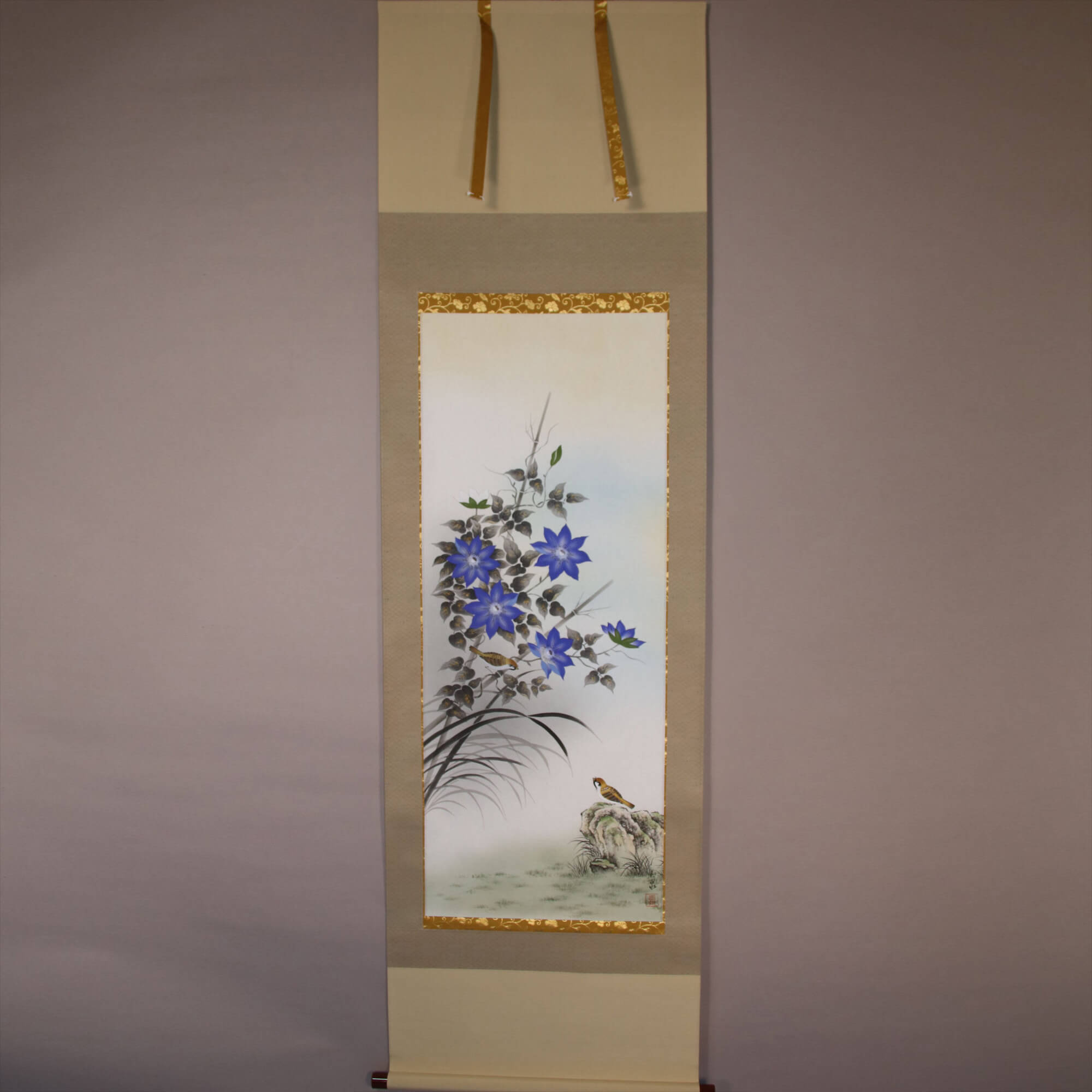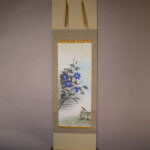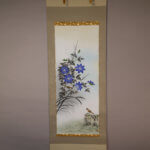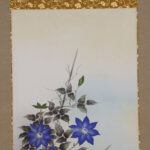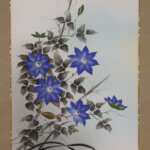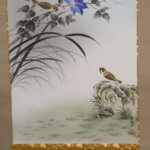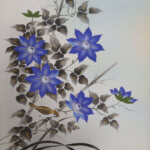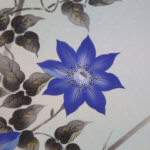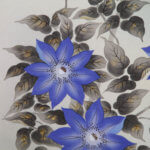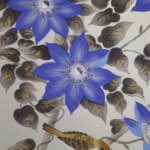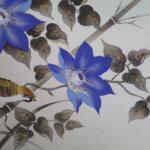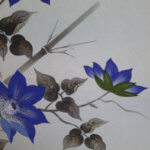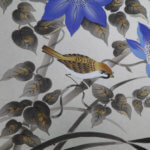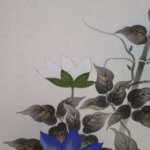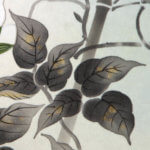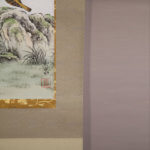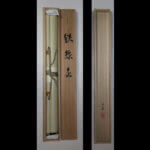Kakejiku Hanging Scroll: Clematis / Hayashi Gyokusen - Tessen
- Product ID
- B0106
- Name
- Hayashi Gyokusen
- Profile
A Japanese-style painter. Member of the Tōyō Bijutsu-kai. A frequent prize winner. Specialized in flowers & birds paintings and landscape paintings.
- Size
- 600mm x 1860mm
- Roller End Material
- Plastic
- Material of the Work
- Silk
- Stock Condition
- Sold out
- Description
A clematis blooms white and purple flowers in early summer. The solid vines are impressive, and it was named tessen (iron line) since the hard vines make you think of iron wires. It came to Japan after the middle of the Muromachi period, and in the Edo period it often appeared in designs, haiku, paintings, etc., and the “Tessenka-zu (Painting of Clematis)” by Kanō Sanraku can be seen in the fusuma sliding door paintings of the Myōshinji Tenkyūin Temple in Kyotō.
In this work, the rhythmic vines that make you feel the strong vitality, the countless leaves that decorate the vines, and the neat and splendid clematises of bluish-purple are drawn with the refreshing colors and bold composition of Hayashi Gyokusen. The two sparrows perched on the supporter for the clematis and the rock seem to be pleased with the flowering of the clematis and it is a smiling scene. It is a perfect work to enjoy early summer.

